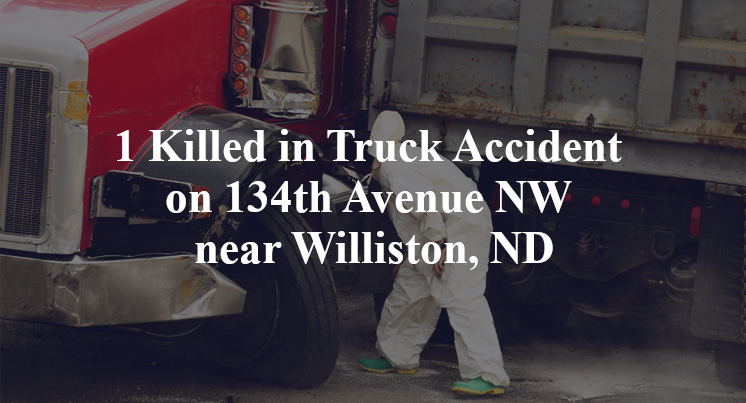1 Killed in Truck Accident on 134th Avenue NW near Williston, ND
Williams County, ND — Williams County, ND — September 12, 2025, one person was killed in a truck accident at about 1 p.m. at 134th Avenue NW and 54th Street NW.
Authorities said a southbound 1996 Peterbilt semi-truck collided with an eastbound 2002 Chevrolet S-10 pickup at the intersection east of Williston.

The pickup driver, a 23-year-old Colorado man whose name has not been made public yet, died in the crash, according to authorities.
The truck driver was not injured, authorities said.
Authorities have not released any additional information about the Williams County crash at this time. The accident is still under investigation.
Commentary
When people hear that a pickup and a semi-truck collided in a rural North Dakota intersection, killing the pickup driver, most folks are left with one central question: How could this happen? Especially on a clear day, in open country, with long lines of sight in every direction, how do two vehicles end up in the same spot at the same time with deadly results?
Right now, there are more questions than answers. According to the limited information that’s been released, a southbound semi and an eastbound pickup came together at an intersection east of Williston. The pickup driver, a 23-year-old man, lost his life. The truck driver was reportedly uninjured.
What’s missing is any explanation of how the crash actually occurred. Was one vehicle supposed to yield? Did either driver ignore a stop sign? Were visibility or road conditions a factor? The answers to these questions don’t just help us understand the sequence of events. They determine who is legally responsible.
The first step in making sense of a crash like this is collecting and analyzing the evidence. In many truck accident cases I’ve worked on, the most critical details don’t come from eyewitnesses. They come from the truck itself.
Nearly every commercial semi on the road today has an engine control module (ECM), often called the truck’s “black box.” These devices can show speed, brake use, throttle position and more. If the truck driver failed to stop, accelerated into the intersection or was traveling at excessive speed, that data should confirm it.
Many modern trucks also have in-cab cameras that show what the driver was seeing and doing before impact. That could answer crucial questions: Was the driver distracted? Was he trying to avoid the crash? Or was he simply not paying attention?
We’d also want to see the driver’s cell phone records to determine if he was talking, texting or using GPS at the time of the crash. Any of those could affect reaction time, or explain a failure to yield or slow down.
Sometimes people assume that if a crash happens, it must be the driver’s fault. But in my experience, that’s often too narrow a view. Trucking companies have a responsibility to vet and train their drivers, and I’ve seen more than one case where a company put someone behind the wheel who never should’ve been hired in the first place.
In one case I handled, the trucking company gave a driver a 20-minute road test and called that an evaluation. That driver had already been fired from multiple jobs for poor performance, and the crash that followed wasn’t so much an accident as an inevitability.
If this North Dakota crash involved a similar breakdown in hiring or oversight, that’s something the evidence will eventually show. But it only shows up if someone bothers to look for it.
There are several unanswered questions that will determine who’s accountable:
- Did either vehicle have the right-of-way?
- Was visibility obstructed, or were sight lines clear?
- Was the semi-truck traveling at a safe speed for the intersection?
- Were there any skid marks or signs of braking?
- Was the pickup driver stopped or rolling through the intersection?
Depending on those answers, responsibility could fall on either driver, or even on others, like a road maintenance agency if signage was missing or obscured.
Key Takeaways
- The cause of the crash hasn’t been disclosed, leaving key questions about right-of-way, visibility and speed unanswered.
- Black box data, dash cam footage and cell phone records will be essential to determine what the truck driver was doing before the crash.
- Depending on what the evidence shows, responsibility could lie with either driver, or with the trucking company itself.
- Trucking company policies and hiring practices often play a hidden role in these kinds of crashes.
- Getting to the truth requires a thorough, independent investigation, not just the initial findings from law enforcement.

“These are essential reads for anyone dealing with the aftermath of a truck wreck”– Attorney Cory Carlson